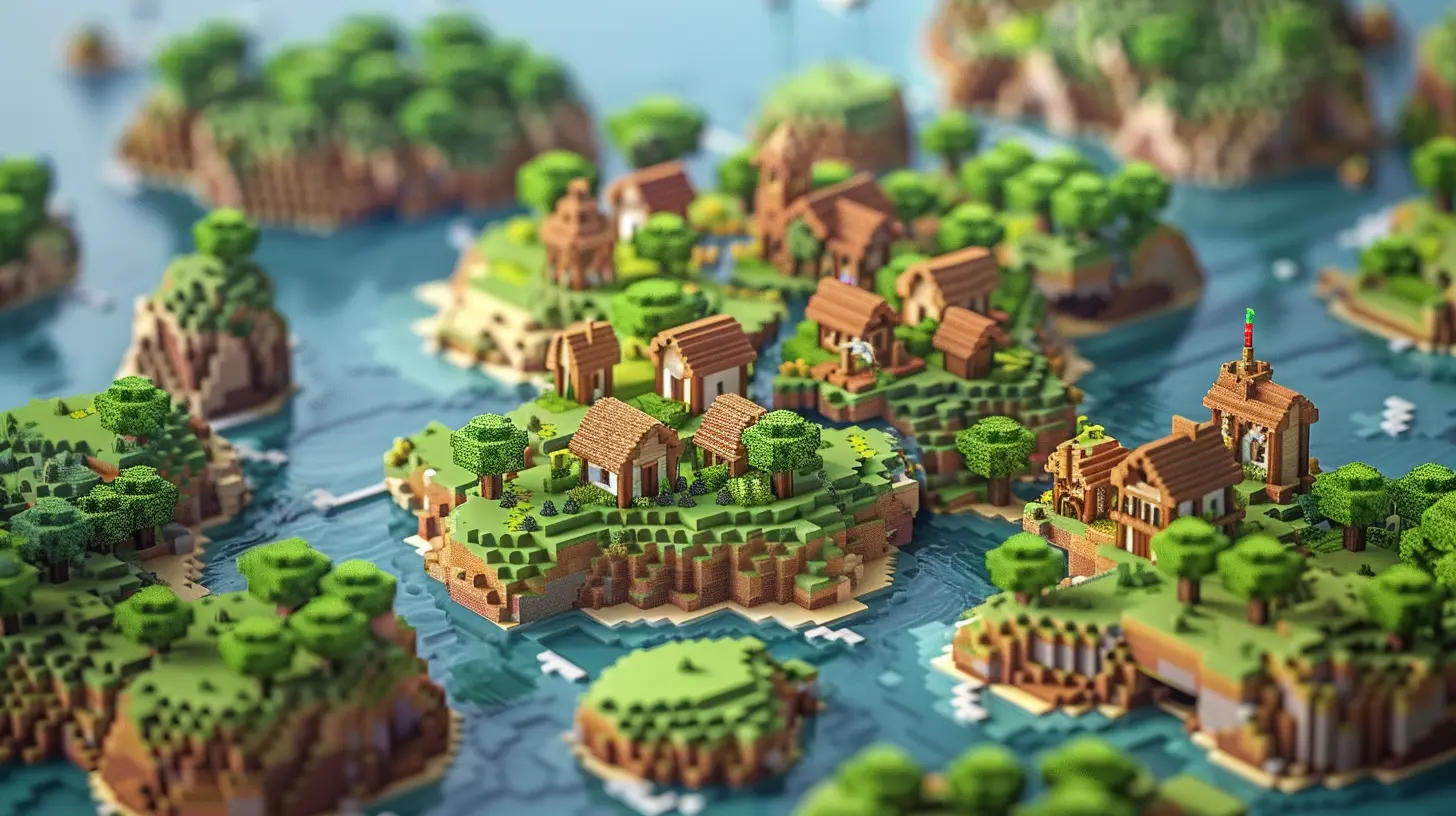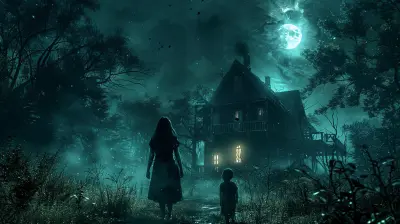Designing a World that Reacts to Player Choices
31 October 2025
Have you ever played a game where the world feels alive, as if it’s paying attention to every decision you make? That’s the magic of a reactive game world. It’s like when you’re at a party, and every conversation you have shifts the vibe of the room. Designing a world that reacts to player choices isn’t just a design challenge—it’s part art, part technology, and entirely awesome. Let’s unravel how game developers bring this concept to life and why it keeps players hooked.
Why Reactive Game Worlds Matter
Imagine playing a game where every choice feels meaningful. You save a town, and NPCs (non-playable characters) start calling you a hero. Or, maybe you double-cross a faction, and next thing you know, they’re hunting you across the map. That kind of responsiveness creates an emotional connection with the game. It makes players feel like they matter.Players crave agency. They want to feel like their actions carry weight, like they’re not just ticking off tasks on a pre-determined checklist. A reactive world can turn a linear experience into a dynamic one, where every playthrough feels unique. It adds replayability, emotional depth, and immersion that keeps players coming back.
The Ingredients of a Reactive World
So, how do you build a world that bends and shifts based on the player’s actions? It’s not magic—though it might feel like it. It’s a combination of clever design, storytelling, and technology. Let’s break it down.1. Branching Narratives
Branching narratives are like a Choose Your Own Adventure book—except with way more complexity. Every choice a player makes ripples outward. For example, in The Witcher 3, small moral decisions snowball into major consequences later in the game. Will that village flourish because you helped them? Or will they resent you for siding with their enemies?Crafting branching narratives is a balancing act. Writers create interweaving storylines that allow players to influence outcomes, ensuring that no two players experience the exact same game.
2. Dynamic NPC Behavior
NPCs are the backbone of a reactive world. They need to do more than stand there and repeat the same line over and over (looking at you, 2000s RPGs). Modern games like Red Dead Redemption 2 give NPCs life. NPCs remember you. Be rude to a bartender, and they’ll treat you coldly next time. Help a stranger, and they might show up later to repay the favor.This kind of behavior isn’t just for show—it makes players feel seen. Suddenly, they’re not just exploring a static world; they’re living in it.
3. Consequential Gameplay Systems
Let’s talk mechanics. Games like Dishonored incorporate systems where your playstyle changes the world around you. Play stealthily, and you leave less chaos in your wake. Go on a killing spree? Expect a darker, grittier world filled with more enemies. These systems reinforce the idea that your actions have consequences, pulling you further into the game's narrative and world.
The Tech Behind It All
Creating a world that reacts isn’t as simple as flipping a switch. It takes robust tools, clever algorithms, and a lot of testing. Here’s how it’s done:1. AI and Machine Learning
Artificial Intelligence is a cornerstone of reactive game worlds. AI helps NPCs adapt to player choices, making them feel human-like. They’ll adjust dialogue, behaviors, and even objectives based on how you treat them. For instance, in Skyrim, guards will mock you for crimes you’ve committed—or praise you for heroic deeds—making your past actions feel alive in the present.Machine learning is a newer kid on the block, but it holds immense potential. Imagine a game learning your playstyle and evolving to suit it. Maybe it adjusts difficulty levels or shifts narratives to align with your preferences.
2. Procedural Generation
Procedural generation takes the heavy lifting out of handcrafting every reaction. Games like Minecraft and No Man’s Sky use algorithms to create dynamic worlds that shift and adapt. Developers can go even further by using procedural systems for NPC dialogue or world events triggered by player actions.3. Decision Trees and Flags
Here’s where things get a bit technical (but I’ll keep it simple). Decision trees and flags are like the brain of a reactive game. They track what choices you’ve made and decide how the world should respond. Say you betray one faction in Mass Effect—a “flag” is triggered, and certain storylines become unavailable. It’s a simple concept, but when layered over dozens of decisions, it creates the illusion of a living, breathing world.
Challenges in Designing Reactive Worlds
Okay, so reactive worlds sound great. But let’s not kid ourselves—it’s hard. Here are some hurdles developers face:1. Balancing Complexity
Making a game where every choice matters is a logistical nightmare. Add too many branching paths, and you risk creating a tangled mess that overwhelms designers and players. Developers have to strike the right balance between depth and manageability. It’s like walking a tightrope—you need to keep everything in sync without toppling over.2. Budget and Time Constraints
Let’s face it: making games is expensive. Adding systems for reactivity takes time, money, and resources. Smaller studios might not have the luxury to implement these mechanics on a large scale, which is why we often see reactive worlds in big-budget RPGs rather than indie platformers.3. Player Expectations
If a game advertises that “your choices matter,” players will scrutinize every detail. If those choices end up feeling inconsequential (looking at you, Mass Effect 3 ending drama), it can backfire spectacularly. Managing expectations is as important as delivering on them.Tips for Players to Enjoy Reactive Games
If you’re a gamer diving into a reactive world, here are a few tips to maximize your experience:- Pay Attention to Details: Sometimes, the most subtle choices have the biggest impacts.
- Experiment: Don’t be afraid to try different paths. Reactive games are built for replayability!
- Own Your Actions: Whether you’re playing the hero or the villain, commit to your decisions. That’s where the fun lies.
The Future of Reactive Worlds
The future is bright for reactive game worlds. With advancements in AI, storytelling tools, and player feedback systems, we’re only scratching the surface of what’s possible. Imagine a game where the story doesn’t just branch—it evolves in real-time based on your emotions, decisions, and even the way you interact with other players.Virtual reality (VR) and augmented reality (AR) will also play a huge role. These immersive platforms could transform reactive worlds into something even more personal and lifelike. Can you imagine NPCs looking you in the eye and reacting to your tone of voice? Yeah, we’re heading there.
Conclusion
Designing a world that reacts to player choices is a craft that combines narrative design, gameplay mechanics, and technology into a seamless package. It’s what turns a game from a passive experience into an unforgettable journey. When done right, it engages players in ways no linear game can match.So next time you pick up a game where your choices matter, take a moment to appreciate the work that went into making that world feel alive. Because for every decision you make, there’s a designer behind the scenes, pulling strings and making it all come together. It’s a dance between the player and the game—a shared experience that blurs the line between reality and fiction.
all images in this post were generated using AI tools
Category:
World BuildingAuthor:

Greyson McVeigh
Discussion
rate this article
1 comments
Max Cruz
This article beautifully captures the essence of immersive storytelling in games. The idea of a world that evolves based on player choices adds depth and emotional weight to the experience. It’s always fascinating to see how our decisions shape the narrative landscape. Great read!
November 11, 2025 at 5:38 AM

Greyson McVeigh
Thank you for your kind words! I’m glad you enjoyed the article and found the concept of evolving narratives engaging. Your insights truly resonate with the vision behind immersive storytelling!


